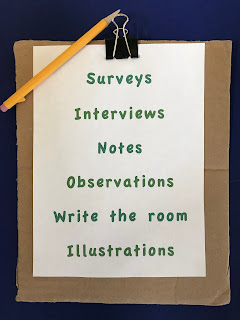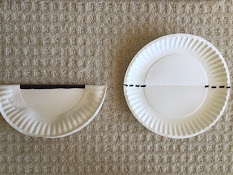How about some ideas for geometry today? You can use these activities with young children or primary age by adapting the shapes. You might even “spy” some ways to make them work virtually!!!
The Shape Song (Tune: "I'm a Little Teapot")
I am momma circle round like a pie. (Hands over head in a circle.)
I’m baby triangle three sides have I. (Use 3 fingers to make a triangle.)
I am papa square my sides are four. (Draw a square in the air.)
I’m cousin rectangle shaped like a door. (Draw a rectangle in the air and then knock.)
I am brother oval shaped like a zero. (Make oval with arms over head.)
I’m sister diamond with a sparkle and a glow. (Touch thumbs and index fingers and extend.)
We are the shapes that you all know. (Make circles with index fingers and thumbs and
Look for us wherever you go. place around your eyes like glasses.)
*Ask the children to draw shapes in the air with elbows, feet, noses, and other body parts as you sing.
Note! Explain that “rhombus” is the correct term for the diamond shape. Sing the song calling sister a “rhombus” instead of a “diamond.”

https://www.youtube.com/watch?v=ZXroY8njjzE
I Spy! Play "I Spy" by having children touch various shapes in their home classroom.
For example: I spy a circle. (Children touch a circle.)
Shape Office
Give children a print out of shapes that they can cut out and glue to a file folder. You can play "I Spy" with this or have children point to the shapes as you sing the above song.
Note! Adapt shapes to the ability of your students and the skills you want to reinforce.
Copy Cat
Children will need paper and a pencil to play this game. The teacher holds up common objects with different shapes (book, cell phone, cookie, index card) and the children try to reproduce them on their paper.
Shape Collage
Cut geometric shapes out of construction paper and let children use them to make a collage. Can they combine simple shapes to make larger shapes?
Shape Hunt at HomeDemonstrate how to take a paper towel roll and wrap it in construction paper to make a spy glass that they can use for spying shapes in their home or on a walk.
Eating Shapes
Here's a simple activity that parents can do at home with crackers that are squares and circles.
*Give children one of each and ask them to describe how they are different.
*Have children eat one half of a cracker.
*Give children a square cracker and challenge them to nibble it into a circle.
*Give children two like crackers. Ask, “Are they the same amount?” Next, have them break one of the crackers into little pieces. Ask, “Are they the same amount now?” You’ll be surprised at their response. (This is called conservation of quantity and is an experiment Piaget used to demonstrate developmental stages.)






















































